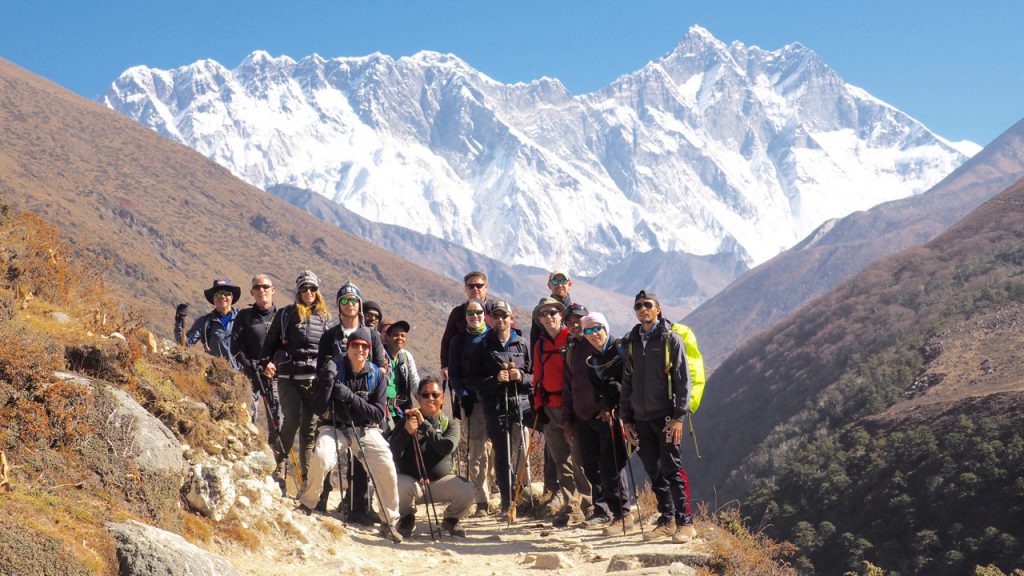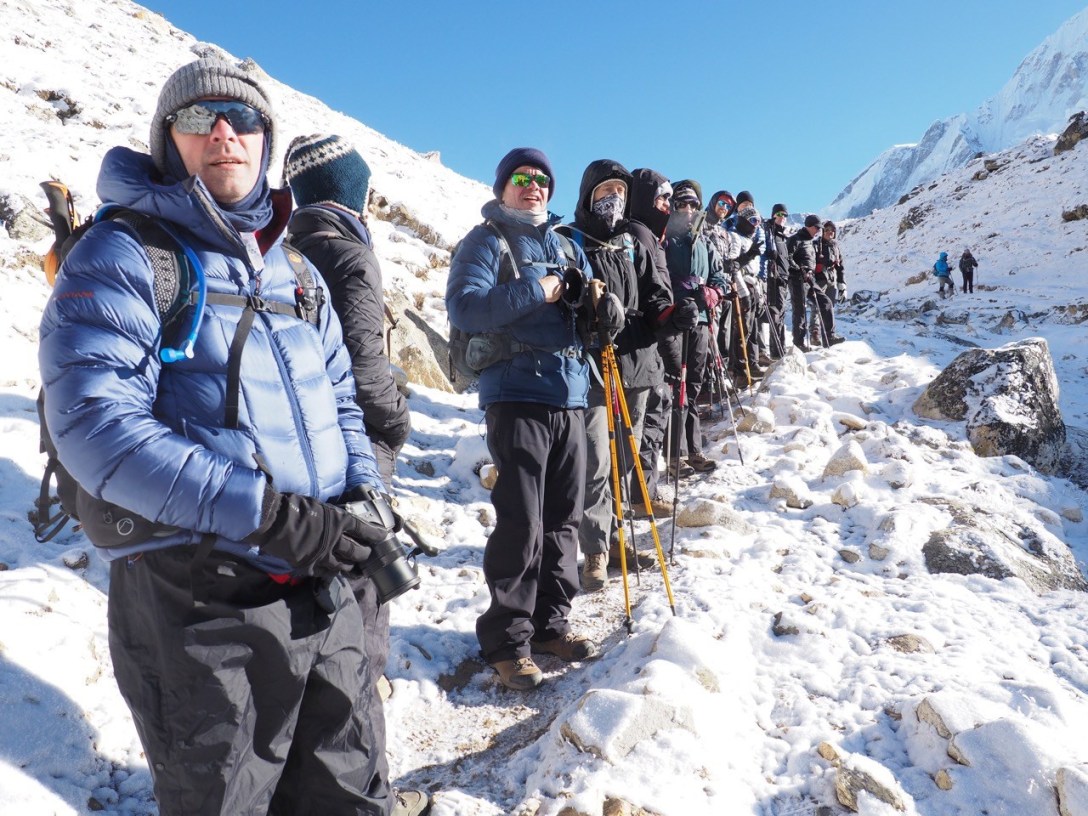We’ve seen it before.
Caught up in a resolution, a mid-life crisis, or boundless optimism, someone books our 14-day Everest Base Camp gay hike. “I can do this.” they assure themselves. “Can’t I?”
Weeks before the climb, their confidence has withered. They weep openly and hyperventilate. They haven’t even purchased the hiking boots that should already be broken in!
If you’re thinking, ‘that sounds like me’, spark some incense, listen to a guided meditation and CTFD (calm the **** down). You *can* do this. Everest’s reputation is worse than her bite. If you’re reasonably fit (to use the guides’ own words), you truly can do this with training and preparation.

Hike
Not to be too literal, but take a hike (or three). Start with 1-2 hour treks 3 months out. Work up to 4-5 hour journeys in the final weeks before your Everest Base Camp climb. It’s best practice to do a few back-to-back treks in order to gauge how your feet, knees and calves will hold up day after day on the mountain.
Replicate the Trek
Everest is neither flat nor paved, and though we’ll have sherpas, you need to carry some supplies. Take full dress rehearsal hikes in your official hiking boots and a backpack weighing 15-20 pounds.

Cross Train
Break up your hikes with cross-training (any activity other than hiking) to build strong, dense muscles and your cardiovascular system. Cycling or spinning are easier on the knees than running but still offer an exceptional cardio workout (as long as you click into hard gear). For building dense muscles, a Stairmaster is perfect. Pro tip: wear your backpack on the Stairmaster. Yes, you’ll likely get a few confused glances at the gym, but the results will be worth it. Finally, swimming improves cardio, muscle growth and breath management concurrently.
Weight Train
Don’t neglect weight training. Quads, calves, hamstrings and glutes will be under a lot of pressure during the ascent. The stronger and more durable they are, the less tasking the hike will be. On top of your hiking and cardio workouts, we recommend one weight day per week in those final three months. Focus on squats, lunges, leg curls and extensions. But don’t neglect core and back exercises.

Rest
Overtraining for Everest Base Camp is just as dangerous as under-training. Remember growth and gains happen on rest days. At most, use a 2-on, 1-off training schedule. For everyone else, a 1-on, 1-off schedule should suffice, providing you begin 3 months out. Finally, slow down your training in the final week. At this point, you want to be resting up before taking on the Mother of the Universe.
What if I didn’t start training 3 months out?!
Although not ideal, you’ll likely be fine. We recommend slotting extra time cross-training as your cardiovascular system will ultimately be the key to your success. More specifically, get acquainted with a Stairmaster.
Final Note
We’ve faced some of the world’s most imposing climbs including the Andes, the Rockies, Kilimanjaro and Everest, but we’re not fitness professionals. If you want to slay your ascent, it may be worth making it rain on a personal trainer.
Interested in surmounting Everest Base Camp with likeminded gay hikers? Check out the Out Adventures’ website for departure dates, a full itinerary and pricing.
Featured Posts
An haunting photo-series featuring Out Adventures' epic gay hike towards Everest Base Camp.Read More
Follow along as Out Adventures' founder Robert Sharp surmounts Everest Base Camp on a gay tour of Nepal. Read More
Breaking down the uniquely Nepalese accommodations known as Tea Houses.Read More
Wake up your chakras with guest host Adam Bolton on today's episode of The Gay Travel Podcast. The yogi dishes his top wellness tips.Read More
Himalayan Buddhists believe the colourful rectangular cloths printed with mantras such as "Om Mani Padme Hum", carry goodwill. Flying them can cure pride, jealousy, ignorance, greed and aggression.Read More
